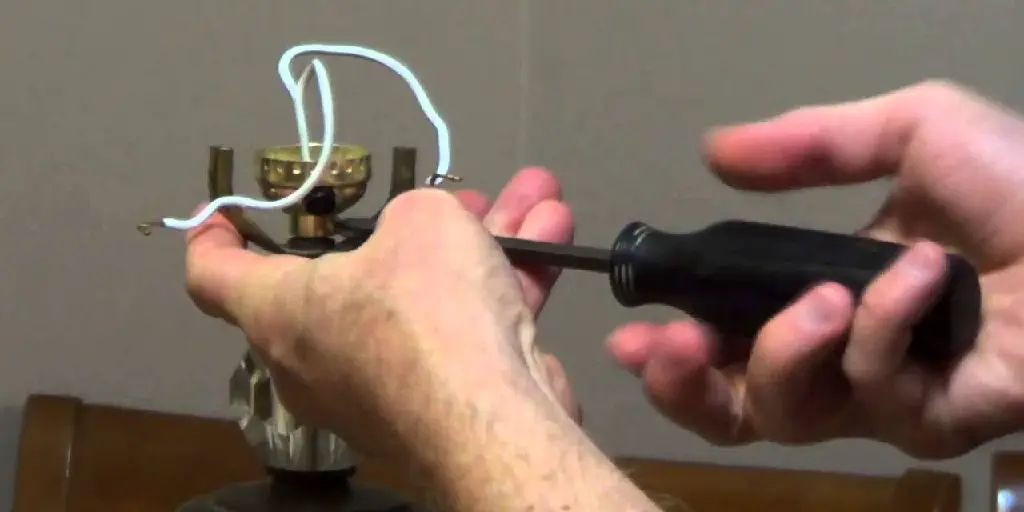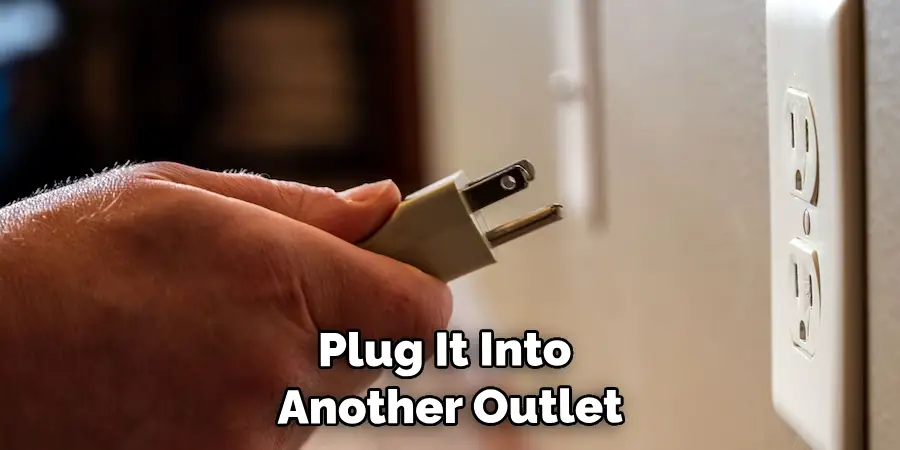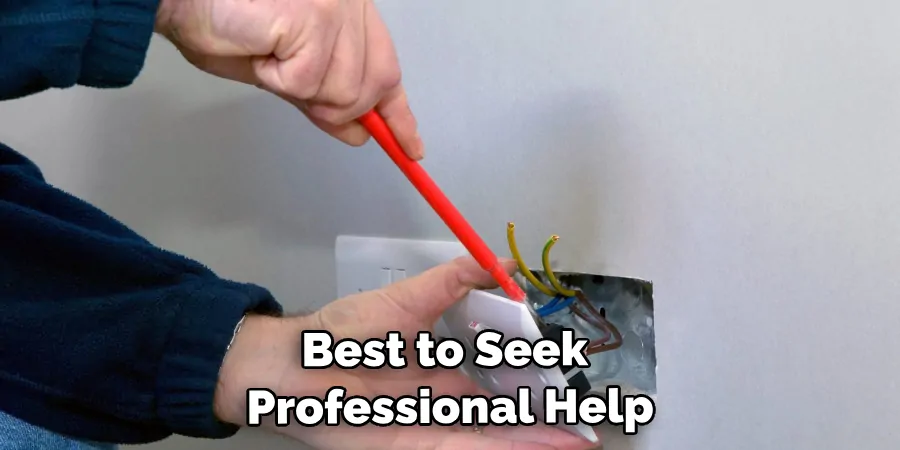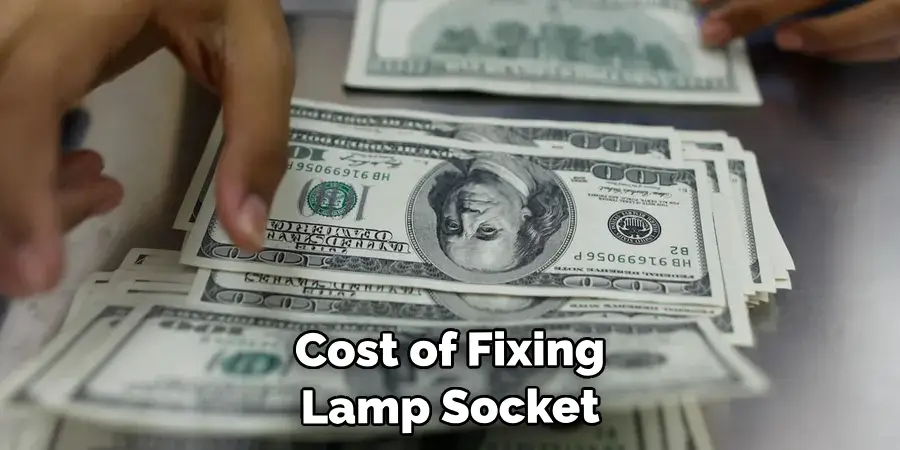Are you struggling to figure out how to fix a malfunctioning lamp socket? No matter what kind of lamp it is or which parts are causing the problem, understanding the basics of how a lamp socket works and having some handy tips at your disposal can make all the difference in getting your light bulb glowing again.

In this blog post we’ll be taking an in-depth look at exactly how to diagnose and how to fix lamp sockets, so come prepared with tools and safety gear – because you’ve got a lot of illuminating work ahead!
What Causes Problems in Lamp Socket?
1 . Improper Wiring
When dealing with lamp sockets, one of the main culprits behind any problems that arise is improper wiring. Poor electrical connections can lead to many issues in a lamp socket, such as flickering lights, intermittent power supply, or even complete failure.
2 . Loose Screws
Another common cause of problems in lamp sockets is loose screws. If the screws that hold the socket in place are not tightened properly, it can lead to a loose connection, resulting in flickering lights or no power supply at all.
3 . Corrosion
Corrosion is another factor that can cause issues with lamp sockets. It occurs when moisture gets into the socket, causing rust and other forms of corrosion. This can also degrade the connection between the socket and the bulb, resulting in flickering or dimming lights.
4 . Damaged Socket
Over time, lamp sockets can become damaged due to wear and tear. This can be caused by frequent use of the lamp or accidental damage. A damaged socket can lead to a myriad of problems, including flickering lights, sparks, or even electrical shocks.
5 . Bulb Compatibility
Sometimes, the issue with a lamp socket may not lie in the socket itself but rather in the bulb being used. Make sure to check that the bulb is compatible with the socket before screwing it in. Using a mismatched bulb can cause flickering, dimming or even damage to both the socket and bulb.
10 Ideas on How to Fix Lamp Socket
1 . Check the Power Source
If your lamp isn’t working, the first thing you should do is check the power source. Sometimes, all you need to do is plug it into another outlet or replace a blown fuse in your electrical panel. Also, make sure the switch is turned on.

2 . Replace the Light Bulb
Another simple solution for a lamp that won’t light up is to replace the light bulb. Make sure you are using the correct wattage and type of bulb for your specific lamp. Sometimes, a burnt-out bulb is all that needs to be fixed.
3 . Tighten or Replace the Lamp Harp
The harp is the metal piece that holds the lampshade in place. If it is loose or damaged, it can cause issues with the socket. Try tightening the screws that hold the harp in place or replace it altogether.
4 . Clean the Socket and Bulb Base
Dirt and dust can accumulate in a lamp socket, causing a poor connection between the bulb and socket. Use a cloth or cotton swab to clean out any debris in the socket and on the base of the bulb. Also, make sure the socket is completely dry before attempting to use it again.
5 . Check for Loose Wires
If your lamp has been recently moved or knocked over, there may be loose wires inside the socket. Carefully unscrew the base of the socket and check for any disconnected or frayed wires. If necessary, reconnect or replace them.
6 . Replace the Socket Interior
If the socket itself is damaged or worn out, you may need to replace the interior. This can usually be done by unscrewing the interior from the base of the socket and replacing it with a new one. Make sure to match the wattage and voltage requirements of your lamp.
7 . Adjust or Replace the Switch
A faulty switch can also cause issues with a lamp socket. Check to see if the switch is loose, stuck, or damaged. If it can be adjusted, try tightening any screws or gently moving the switch. Otherwise, you may need to replace it.

8 . Inspect the Cord
If your lamp cord that plugs into an outlet, check for any damage such as frayed or exposed wires. These can be dangerous and need to be replaced immediately.
9 . Test with a Different Lamp
Sometimes, the issue may not be with the socket itself, but rather with the lamp as a whole. Test the socket by plugging in a different lamp to see if it works. If it does, then you know the problem lies with the original lamp and not the socket.
10 . Seek Professional Help
If you have tried all of these solutions and your lamp still isn’t working, it may be time to seek professional help. A licensed electrician can diagnose and fix any electrical issues with your lamp or home wiring. Your safety should always be a top priority when dealing with electricity.
So if you are unsure or uncomfortable with any of these steps, do not hesitate to call a professional. By following the tips above, you can easily fix a lamp socket and have your favorite lamp shining again in no time. Remember to always practice caution when dealing with electricity and never attempt to fix anything if you are unsure about what you are doing. Stay safe!
Frequently Asked Question
What Precautions Should I Take When Fixing a Lamp Socket?
When fixing your lamp socket, it is important to take the necessary precautions to avoid any potential hazards. Here are some tips to keep in mind:
- Always make sure that the lamp is unplugged before beginning any repairs.
- Wear protective gear such as gloves and safety glasses to prevent injury while working with electrical components.
- Check for any exposed wires or damaged parts before proceeding with the repair.
- If you are unsure about your ability to fix the socket, it is best to seek professional help.

Can I Replace a Lamp Socket By Myself?
Yes, you can replace a lamp socket by yourself as long as you have the necessary tools and knowledge. However, if you are not confident in your abilities or do not feel comfortable working with electrical components, it is best to leave it to a professional.
How Do I Know If My Lamp Socket Needs to Be Replaced?
There are a few signs that indicate your lamp socket may need to be replaced. These include:
- The light bulb flickers or does not turn on at all when the switch is turned on.
- The lamp socket feels loose or wobbly.
- There is visible damage to the socket, such as cracks or discoloration.
Can I Fix a Lamp Socket Without Replacing It?
In some cases, it may be possible to fix a lamp socket without having to replace it entirely. If the issue is with loose wiring or a faulty switch, these can be repaired without needing to replace the entire socket. However, if there is significant damage to the socket itself, it will likely need to be replaced.
How Much Does It Cost to Fix a Lamp Socket?
The cost of fixing a lamp socket will vary depending on the extent of the damage and whether you choose to do it yourself or hire a professional. On average, the cost can range from $20 to $100 for parts and labor. Also keep in mind that if you choose to hire a professional, their labor costs may vary. It is always a good idea to get a quote from multiple sources before making a decision.

How Much Does It Cost to Replace a Lamp Socket?
The cost of replacing a lamp socket will also vary depending on the type and quality of socket you choose, as well as any additional labor costs if you hire a professional. On average, the cost can range from $10 to $50 for the socket itself, with additional labor costs averaging around $20 to $50 per hour.
Conclusion
In conclusion, the process of replacing a lamp socket may seem cumbersome at first, however, it is not impossible and is possibly as easy as following the instruction above. Once you have correctly replaced your lamp socket, you and your family can enjoy its light safely. Don’t be afraid to rewire the lamp again if it doesn’t work. You will find that with time and practice, replacing a lamp socket becomes easier and something you are willing to do in the future.
Now you know how to fix lamp socket! So remember all that is involved when working with electricity such as assessing any risk of shock or fire hazard before getting started. We encourage you to follow these detailed steps if you are facing an issue with the lamp socket so that you can fix it safely and effectively.

